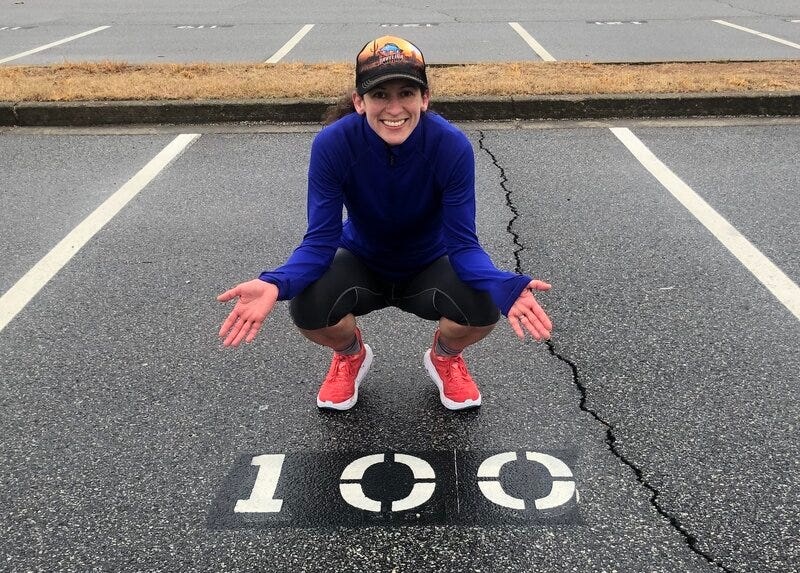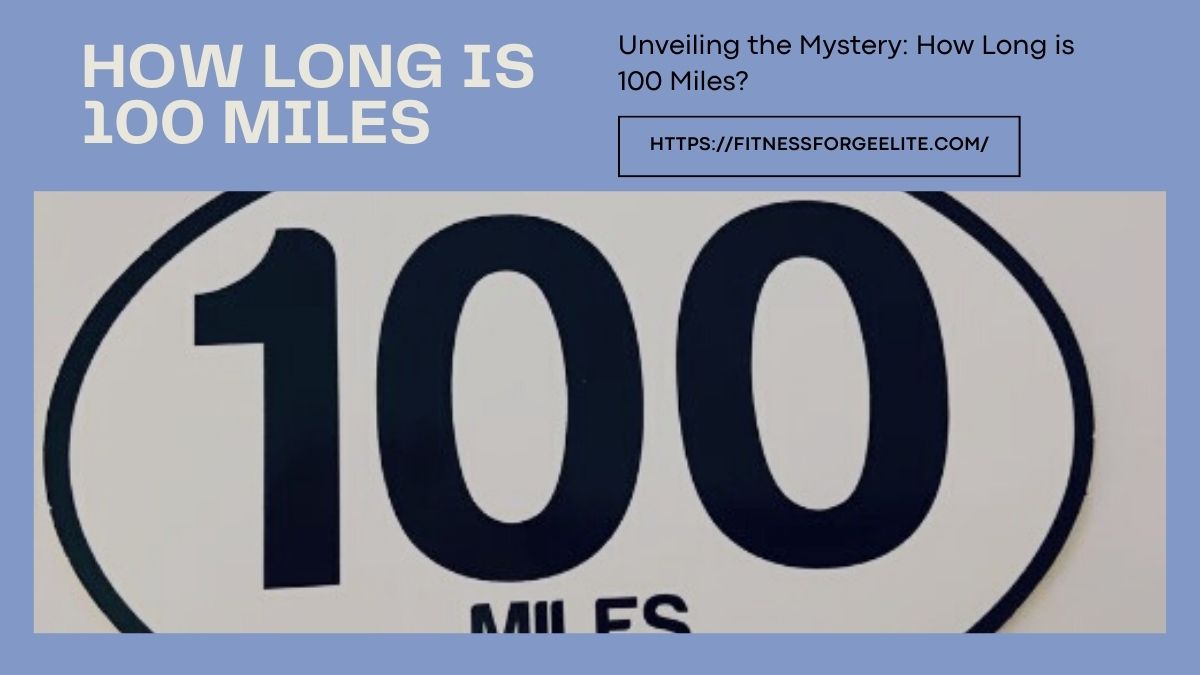Picture yourself standing at a starting line, ready to embark on a journey. But before you take that first step, have you ever stopped to wonder just how far 100 miles really is? In our everyday lives, we often toss around distances without fully comprehending their magnitude. Yet, understanding the scale of 100 miles can unveil a world of insight into our surroundings, our capabilities, and our history. Join me as we delve into the intricacies of this seemingly simple question: How long is 100 miles?
What exactly does it mean to travel 100 miles? Is it a mere hop, skip, and jump, or a monumental undertaking? As we explore this question, we’ll uncover the layers of complexity behind the seemingly straightforward concept of distance. From the origins of the mile measurement to its modern-day interpretations, we’ll lay the groundwork for a deeper understanding of 100 miles.
Defining the Distance
The Evolution of the Mile
The mile, a unit of measurement deeply ingrained in our cultural lexicon, has undergone a fascinating evolution throughout history. Its origins trace back to ancient Rome, where it was defined as 1,000 double paces of a Roman soldier. Over time, various cultures developed their own interpretations of the mile, leading to discrepancies in its length. It wasn’t until the 16th century that the modern statute mile, equivalent to 5,280 feet, became standardized in England. Today, the statute mile remains the most widely recognized form of measurement in countries like the United States, the United Kingdom, and others influenced by British imperial units.
Regional Variations
Despite the prevalence of the statute mile, it’s important to acknowledge the existence of regional variations in mile definitions. In countries such as Ireland and the United Kingdom, the statute mile reigns supreme. However, in places like Australia and Canada, the metric mile, equivalent to 1,609.344 meters, is favored. Additionally, some countries, particularly those using the metric system exclusively, have adopted the kilometer as their primary unit of distance measurement, rendering the mile obsolete in everyday usage. These regional differences highlight the diverse ways in which distance is conceptualized and measured around the world.
Read More: Unraveling the Mystery and Exploring the Length of 50 Miles
Understanding the Magnitude
Now that we have a foundational understanding of the mile, let’s delve into the significance of 100 miles. At first glance, it may seem like a manageable distance—a mere blip on the map. However, when we consider the scale of 100 miles in relation to our daily lives, its magnitude becomes apparent. To put it into perspective, imagine driving from one end of a bustling metropolis to another, traversing highways, city streets, and suburban sprawl—a journey encompassing 100 miles of urban landscape. Alternatively, picture embarking on a weekend road trip, venturing from one picturesque town to the next, each stop separated by approximately 100 miles of scenic countryside. Whether measured in miles or kilometers, 100 units of distance represent a substantial portion of our surroundings, each with its own unique characteristics and challenges.
The Reality of 100 Miles
Putting Distance into Context
When grappling with the concept of 100 miles, it’s essential to contextualize its significance within our daily lives. For many, 100 miles may conjure images of long, winding roads stretching endlessly into the horizon—a daunting prospect for even the most seasoned travelers. However, by breaking down this distance into more digestible increments, we can gain a better understanding of its practical implications. Consider, for instance, the average walking speed of a human—approximately 3 to 4 miles per hour. At this pace, covering 100 miles on foot would require anywhere from 25 to 33 hours of continuous walking, a feat reserved for the most dedicated hikers and endurance athletes.

Modes of Transportation
Of course, not all journeys are undertaken on foot. In fact, the manner in which we travel can drastically alter our perception of distance. For those with access to motorized vehicles, such as cars or motorcycles, covering 100 miles can be a relatively quick and effortless endeavor. At highway speeds, averaging around 60 to 70 miles per hour, a journey spanning 100 miles can be completed in under two hours—a mere blip on the radar for seasoned commuters. Similarly, cyclists equipped with lightweight bicycles and aerodynamic gear can cover the same distance in a matter of hours, their sleek silhouettes slicing through the air with minimal resistance.
Challenges and Considerations
However, it’s important to acknowledge that not all 100-mile journeys are created equal. Factors such as terrain, weather conditions, and traffic congestion can significantly impact travel time and overall experience. For example, traversing 100 miles of rugged mountain terrain may require substantially more time and effort than navigating a flat, straight highway. Likewise, adverse weather conditions, such as heavy rain or snow, can pose additional challenges for travelers, necessitating caution and careful planning. By taking these factors into account, we can gain a more nuanced understanding of the complexities associated with covering 100 miles by various modes of transportation.
Psychological and Physical Impact
The Mental Challenge
Beyond the physical aspect, covering 100 miles can also present a significant mental challenge. Endurance activities such as ultra-marathons and cycling events often push participants to their limits, testing their resilience and determination. For many athletes, the prospect of traversing such a formidable distance can evoke feelings of apprehension and self-doubt. However, it’s often these moments of uncertainty that fuel their drive to succeed, propelling them forward one step at a time. By embracing the mental challenge of 100 miles, athletes can tap into their inner reserves of strength and perseverance, ultimately emerging victorious in the face of adversity.
Physical Endurance
In addition to mental fortitude, covering 100 miles requires a high level of physical endurance. Endurance athletes must train rigorously, gradually increasing their mileage and intensity to prepare for the demands of race day. This process, known as periodization, involves strategically planning training cycles to optimize performance and minimize the risk of injury. From long-distance runs to high-intensity interval sessions, athletes employ a variety of training techniques to build strength, speed, and stamina. By dedicating themselves to a disciplined training regimen, athletes can ensure they’re adequately prepared to tackle the challenges that lie ahead, both mentally and physically.
The Rewards of Achievement
Despite the inherent challenges, the rewards of completing a 100-mile journey are immeasurable. For many athletes, crossing the finish line represents the culmination of months, if not years, of hard work and dedication. It’s a testament to their unwavering commitment to excellence and their ability to overcome obstacles in pursuit of their goals. Whether standing atop a podium or simply basking in the glow of personal accomplishment, the sense of achievement that accompanies completing a 100-mile endeavor is second to none. It serves as a reminder of the boundless potential that lies within each of us, waiting to be unleashed through determination, perseverance, and a willingness to push beyond our limits.
Cultural and Historical References
Notable Events and Journeys
Throughout history, countless individuals have embarked on epic journeys spanning 100 miles or more. From ancient explorers navigating uncharted territories to modern-day adventurers pushing the boundaries of human endurance, these journeys have left an indelible mark on the fabric of our collective consciousness. One such example is the legendary trek of Lewis and Clark, who traversed over 3,700 miles of rugged terrain in search of a passage to the Pacific Ocean. Their expedition, undertaken in the early 19th century, remains a testament to the spirit of exploration and discovery that continues to drive humanity forward to this day.

Literary and Artistic Representations
In addition to real-life adventures, 100-mile journeys have also captivated the imaginations of artists and writers throughout history. From epic poems to sweeping landscapes, these representations offer a glimpse into the profound impact of distance on the human psyche. Consider, for instance, the iconic opening line of Jack Kerouac’s novel “On the Road”: “I first met Dean not long after my wife and I split up.” In just a few short words, Kerouac captures the essence of a journey spanning thousands of miles—a journey fueled by restless energy and an insatiable desire for freedom. Similarly, artists such as Thomas Cole and Albert Bierstadt have immortalized the awe-inspiring beauty of the American landscape, showcasing the vastness and grandeur of 100-mile vistas with breathtaking detail and precision.
Pop Culture Phenomena
In addition to literature and art, 100-mile journeys have also permeated popular culture, inspiring countless films, books, and games. From classic road trip movies like “Thelma & Louise” to epic fantasy novels like “The Lord of the Rings,” these works of fiction transport audiences to distant lands and unknown worlds, inviting them to embark on their own virtual adventures. Similarly, video games such as “The Legend of Zelda: Breath of the Wild” and “Red Dead Redemption 2” offer players the opportunity to explore vast open worlds teeming with danger and discovery, each step bringing them closer to the ultimate prize. By immersing themselves in these richly imagined worlds, audiences can experience the thrill of 100-mile journeys from the comfort of their own homes, embarking on epic quests and forging their own destinies.
Conclusion
In conclusion, the question of how long is 100 miles is far more complex than it may initially seem. From its humble origins in ancient Rome to its modern-day interpretations, mile measurement has evolved alongside human civilization, shaping the way we perceive distance and navigate our surroundings. Whether measured in miles or kilometers, 100 units of distance represent a substantial portion of our world, each with its own unique challenges and opportunities. By embracing the journey, whether literal or metaphorical, we can unlock the mysteries of distance and discover the boundless potential that lies within each of us.
FAQs (Frequently Asked Questions)
The significance of 100 miles lies in its representation of a substantial distance in various contexts. It serves as a benchmark for endurance activities such as ultra-marathons and cycling events, as well as a measure of travel distance in everyday life. Additionally, 100 miles holds cultural and historical significance, symbolizing the spirit of exploration and human achievement.
The time it takes to travel 100 miles varies depending on the mode of transportation. For example, driving a car at highway speeds may take around 1.5 to 2 hours, while walking at a moderate pace could take 25 to 33 hours. Factors such as terrain, weather conditions, and traffic congestion also influence travel time.
Throughout history, countless individuals and groups have embarked on epic journeys spanning 100 miles or more. One notable example is the expedition of Lewis and Clark, who traveled over 3,700 miles across North America in the early 19th century. Other notable journeys include the migration of early humans across continents and the exploration of uncharted territories by ancient civilizations

